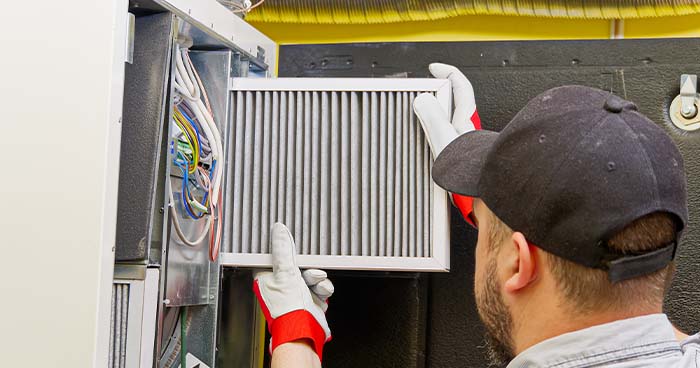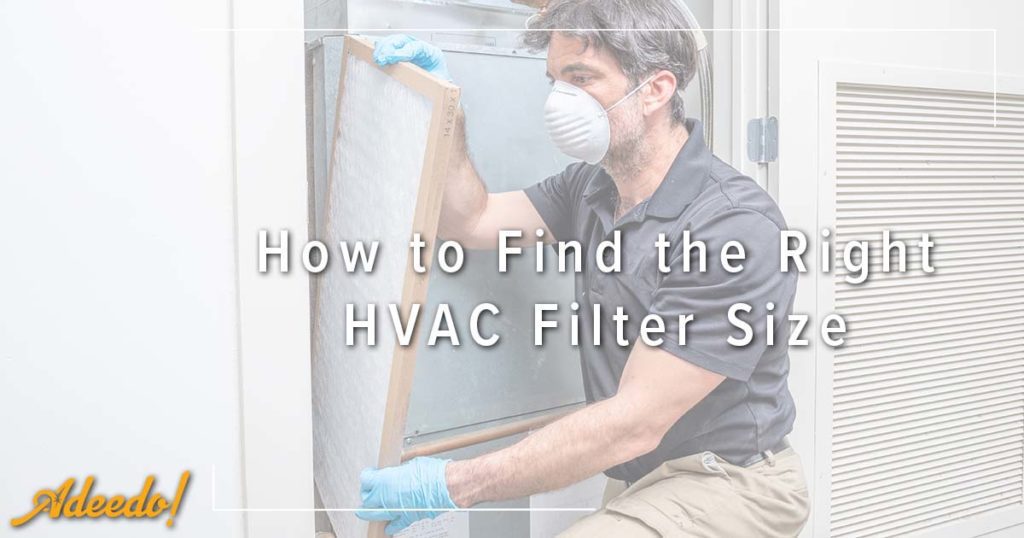Replacing your HVAC filter is an important part of HVAC maintenance and keeps your system running safely and efficiently. Of course, it’s much easier to change your filter when you know what size and type you need.
Shopping can be overwhelming, but you never want to guess at the right size for your filter. With just a little know-how, you can get the right HVAC filter size without a lot of stress or hassle. You can also change it yourself, but if you prefer, you can bring in a pro to do it for you.
Why Does the HVAC Filter Size Matter?
If your air filter is too big, you simply can’t cut it to fit into your HVAC system. That only allows contaminants and air to escape, defeating the purpose of having a filter in the first place and wasting energy.

Look at Your Existing Air Filter
The quickest and easiest way to determine the size for your new HVAC filter is by checking the old filter. Most air filters have a size printed on the side of the frame, with the length, width, and depth measured in inches.
Measure It Yourself
If your current air filter doesn’t have measurements printed, you can measure it yourself easily. All you need is a measuring tape to determine the length, width, and depth of your air filter.
Measure Air Register or Air Filter Slot
If the previous methods aren’t possible, such as with a missing air filter, you can measure the slot that the air filter goes into. This will help you determine what size air filter is appropriate.

Where Is the Air Filter Located?
Air filters are typically located in the return air intake on the furnace. Look for the area where the return duct comes into your furnace, and you should see a plate that covers the air filter slot.

Know Your Air Filter’s MERV Rating
Aside from size, you’ll also need to determine the MERV rating for your air filter before replacing it. This is a measurement of how effective the air filter is at removing particles from the air. The higher the MERV rating, the more effective the filter will be at removing small particles from the air.
Ideally, homes should have a MERV rating of 5 to 8. This range provides good filtration and will remove pollen, dust mites, and mold spores. Your system will also run efficiently, as long as you’re diligent about replacing the filters as needed.
Do you need to change your air filter or other HVAC repairs or replacements? Contact Adeedo to schedule your appointment!

